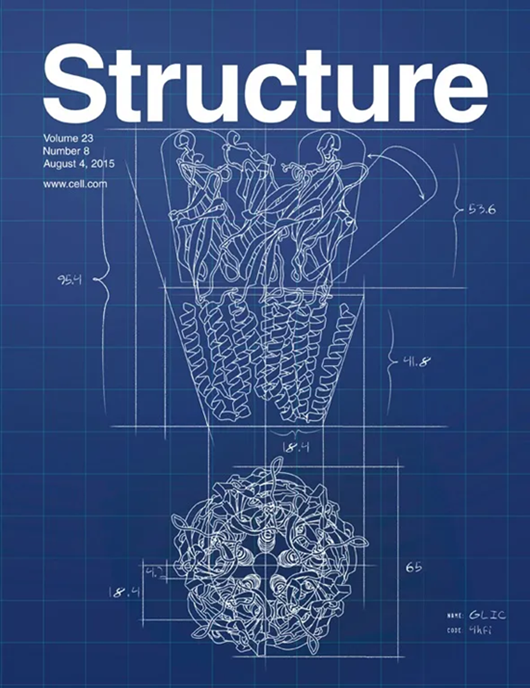Chloride binding does not influence prestin motor speed at very high frequencies in the mouse outer hair cell
IF 4.3
2区 生物学
Q2 BIOCHEMISTRY & MOLECULAR BIOLOGY
引用次数: 0
Abstract
Prestin (SLC26A5) promotes mechanical feedback via outer hair cells (OHC) within the organ of Corti, governed by voltage-dependent kinetics of its charge movements; namely, nonlinear-capacitance (NLC). We study NLC frequency response in mouse OHC membrane patches. The characteristic frequency cut-off (Fis) is 27 kHz. Single point mutations within prestin’s chloride binding pocket (S396E and S398E) lack usual anion influence. In agreement, we show absence of anion binding in these mutants through molecular dynamics (MD) simulations. NLC Fis in S396E knock-in mice is unaltered, indicating that high frequency activity is not governed by chloride but likely by viscoelastic loads. Also, the allosteric action of chloride does not underlie piezoelectric-like behavior in prestin, since tension sensitivity of S396E NLC is comparable to WT. Because structures of all studied species appear indistinguishable, with analogous chloride binding pockets, prestin performance likely evolved by modifying, not its protein-anion interaction, but instead mechanical loads on the protein.

在小鼠外毛细胞中,氯离子结合在非常高的频率下不影响prestin运动速度
Prestin (SLC26A5)通过Corti器官内的外毛细胞(OHC)促进机械反馈,受其电荷运动的电压依赖动力学控制;即非线性电容(NLC)。我们研究了NLC在小鼠OHC膜片中的频率响应。特征截止频率(Fis)为27 kHz。prestin氯结合袋内的单点突变(S396E和S398E)缺乏通常的阴离子影响。在一致,我们显示缺乏阴离子结合在这些突变体通过分子动力学(MD)模拟。S396E敲入小鼠的NLC Fis没有改变,这表明高频活性不是由氯化物控制的,而可能是由粘弹性载荷控制的。此外,氯化物的变构作用并不能作为形变蛋白的压电样行为的基础,因为S396E NLC的张力敏感性与WT相当。由于所有研究物种的结构似乎难以区分,具有类似的氯化物结合袋,形变蛋白的性能可能是通过改变而不是蛋白质-阴离子相互作用而进化的,而是通过蛋白质上的机械负荷。
本文章由计算机程序翻译,如有差异,请以英文原文为准。
求助全文
约1分钟内获得全文
求助全文
来源期刊

Structure
生物-生化与分子生物学
CiteScore
8.90
自引率
1.80%
发文量
155
审稿时长
3-8 weeks
期刊介绍:
Structure aims to publish papers of exceptional interest in the field of structural biology. The journal strives to be essential reading for structural biologists, as well as biologists and biochemists that are interested in macromolecular structure and function. Structure strongly encourages the submission of manuscripts that present structural and molecular insights into biological function and mechanism. Other reports that address fundamental questions in structural biology, such as structure-based examinations of protein evolution, folding, and/or design, will also be considered. We will consider the application of any method, experimental or computational, at high or low resolution, to conduct structural investigations, as long as the method is appropriate for the biological, functional, and mechanistic question(s) being addressed. Likewise, reports describing single-molecule analysis of biological mechanisms are welcome.
In general, the editors encourage submission of experimental structural studies that are enriched by an analysis of structure-activity relationships and will not consider studies that solely report structural information unless the structure or analysis is of exceptional and broad interest. Studies reporting only homology models, de novo models, or molecular dynamics simulations are also discouraged unless the models are informed by or validated by novel experimental data; rationalization of a large body of existing experimental evidence and making testable predictions based on a model or simulation is often not considered sufficient.
 求助内容:
求助内容: 应助结果提醒方式:
应助结果提醒方式:


